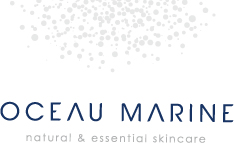Our skin can have difficulty reacting to the influx of UV rays during the summer months.
Sun protection not adapted to our phototype (skin type), hours spent in the sun without taking into account the UV intensity of the day and the radiation hitting our skin, fragile or damaged skin regularly exposed to the sun, pollution, skin aging...
There are many causes for the appearance of sun spots, but this phenomenon should not be taken lightly: not only is it difficult to get rid of these pigmented spots once they've set in, but they can also “degenerate” and increase the risk of irreversible cellular damage, even leading to the appearance of skin cancer...
That's why you should take steps to limit or stop the appearance of sun spots.
Here are my tips for protecting your skin and, if the damage has already been done, reducing the appearance of sun spots.
HYPERPIGMENTATION LINKED TO SUN EXPOSURE: A SKIN REACTION
Sun spots are generally linked to too much UV being absorbed by the skin.
The skin reacts by protecting itself as usual through the natural process of melanin (the pigment responsible for tanning, which provides initial protection against UV rays), but by overproducing this pigment.
Either because it has received too much UV all at once (as can be the case during the hottest hours of the day, generally between 11 a.m. and 4 p.m.), or in terms of duration, because the skin is no longer able to process the total excess of UV and melanocytes go into overdrive, activating too much melanin
to protect themselves.
The most exposed areas are obviously most affected by this phenomenon: hands and arms, face and neck, shoulders and décolleté...
Brown spots form small, localized clusters of varying size and without relief. They are harmless, but they are a visible sign of skin barrier breakdown, which should alert us to the condition of the skin (if in doubt - size, thickness, growing spot - we recommend you consult a specialist who can rule out the risk of melanoma).
OTHER CAUSES OF SUN SPOTS
Medication: for this reason, avoid exposure to the sun when taking medication, and read the instructions and contraindications carefully!
Hormonal disorders & changes: these can have an impact on melanin, over-stimulating its production (as is the case during pregnancy, with the famous “pregnancy mask” which can appear on some expectant mothers but which, unlike “classic” sun spots, generally fades a few months after childbirth).
Contraceptives & hormone treatments: which modify hormone secretion and can disrupt melanocytes (the cells responsible for melanin production).
Skin ageing: mature skin has more difficulty reacting to UV rays, so brown spots can appear as early as age 40, if the “sun capital” has been too heavily depleted.
Inflammation & scars: even if, strictly speaking, they are not sun spots, scars and eczema-type inflammations can also suffer from hyperpigmentation, as is the case with acne scars, for example, where the skin is weakened and turns brown if not properly protected from UV rays.
Pollution: because it weakens the skin by breaking down the cutaneous barrier and promotes cellular aging, which is one of the causes of the appearance of sun spots.
HOW TO PROTECT YOUR SKIN & PREVENT THE APPEARANCE OF SUN SPOTS?
It's important to take preventive action to prevent the appearance of sun spots and significantly reduce the harmful effects of UV exposure.
Whatever your age and skin condition, sun protection adapted to the intensity of UV radiation and your phototype (skin type in terms of tone and sensitivity) is the first step.
At the start of exposure, and even afterwards if your skin is more fragile, we recommend that you avoid the hottest hours of the day, and use the highest possible sun protection factor (SPF) at peak sunshine hours, bearing in mind that even a highly protective filter never provides total protection, and needs to be reapplied regularly to optimize its effect. On the other hand, lower the SPF to get your skin used to the sun's rays at certain times of the day.
At Oceau Marine, preserving marine resources is at the heart of our approach, which is why we invite you to select “Ocean Friendly” mineral sunscreens that protect your skin while not polluting marine flora and fauna.
For the rest of the time, wear protective clothing, a hat and sunglasses to provide an effective barrier.
YOUR DAILY SKIN CARE ROUTINE TO COMBAT SUN SPOTS
On a daily basis, isotonic seawater recharges the skin with essential nutrients and trace elements, giving it the resources it needs to better resist external aggressors such as UV rays.
Relax Isotonic is the seawater treatment to use morning, evening and even after sun exposure (it can be used by everyone, including to nourish the skin of children and pregnant women).
Its melting texture is fully absorbed by the skin, which uses it directly to remineralize and deeply moisturize.
This is all the more important if sun spots are already present, as you need to act without delay by moisturizing the skin as much as possible to enable it to replenish its reserves, heal better and fade spots.
Mature skin would also benefit from using a richer night care product like Night Magic.
Night Magic is a highly nourishing night cream, enriched with borage, which acts directly against skin ageing and promotes better cellular healing, making it ideal for strengthening the hydrolipidic film and providing maximum nourishment.


